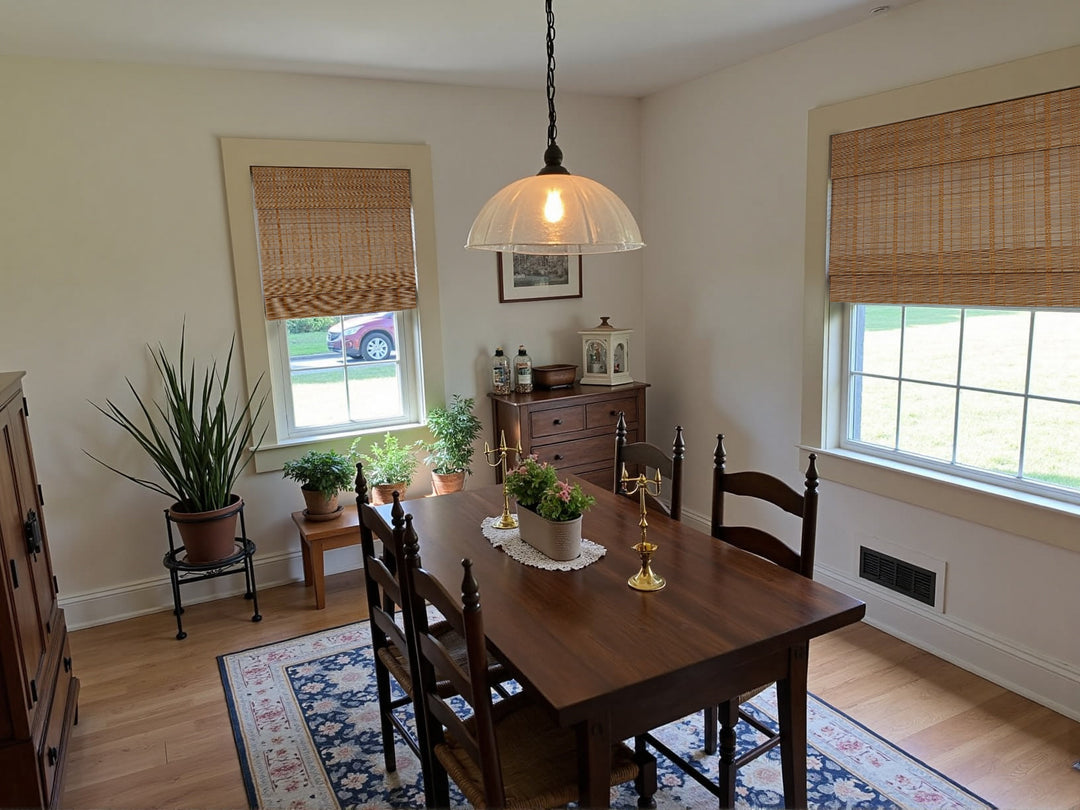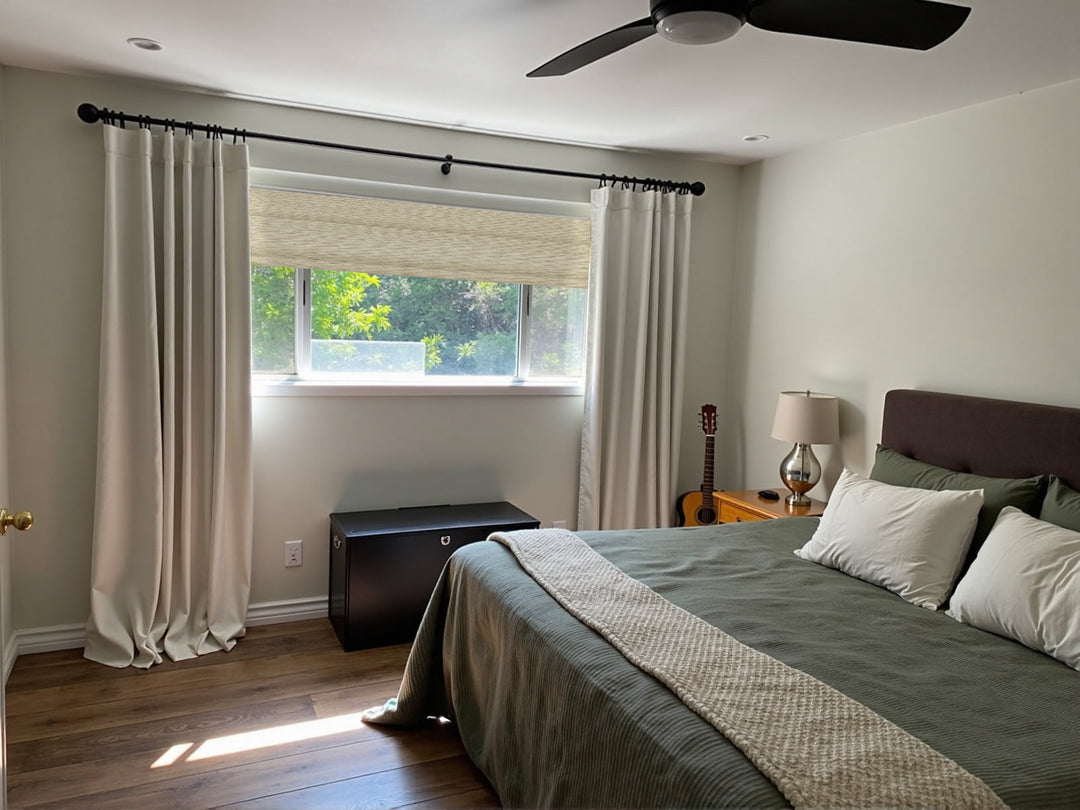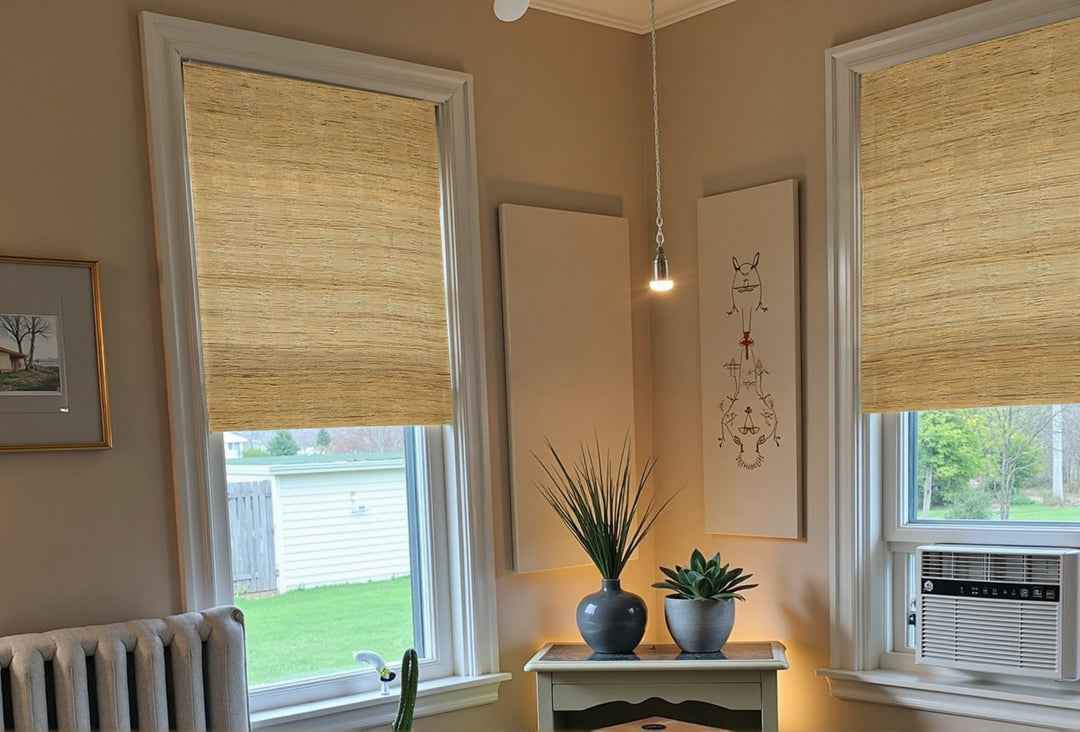An Introduce to Curtains: Development, Features, Types and Style
When we talk about "curtains", we naturally think of the fabric curtains in our homes. In fact, the concept of curtains dates back to ancient times, but because fabrics were relatively expensive, people often used paper, grass, or bamboo as window coverings (of course, we also have bamboo curtains now), which mainly served to block sunlight and wind. With the rapid development of modern science and technology, there have been significant advancements in curtain fabric materials. There are many simple-style curtains made of aluminum, wood, woven wood, woven wood, printed fabrics, dyed fabrics, yarn-dyed fabrics, jacquard printed fabrics, advertising fabrics, etc. There are also various curtains with different functions such as flame retardant, energy-saving, sound-absorbing, sound-insulating, antibacterial, mildew-proof, dust-proof, waterproof, oil-proof, anti-fouling, anti-static, alarm, lighting, etc., marking a new era in curtain fabric development.
With changing consumer aesthetics and the gradual strengthening of environmental awareness, curtains also reflect a user's lifestyle and personal taste. A simple and elegant curtain can not only add icing on the cake for the room, but also relax the mood and relieve anxiety. In addition to the decorative function, the material, other functions and comfort of curtains are also closely related to our health and life. Therefore, thermal-insulating curtains, UV-blocking curtains, and modern minimalist curtains are highly favored by consumers.

1. Key Features of Curtains
To gain a deeper understanding of curtain fabrics, we must first clearly understand the functions of curtains. This allows us to better select materials and design styles based on different functional needs.
-
Privacy Protection Function: Privacy concerns vary across different indoor spaces. The living room, as a public activity area, has relatively low privacy requirements. Most people keep living room curtains open, prioritizing decoration. In contrast, bedrooms, bathrooms, and other private spaces require a higher level of privacy. For the living room, decorative curtains are recommended, while thicker fabric curtains are more suitable for bedrooms.
-
Decorative Function: Many families today prefer a modern, minimalist style for home decor. For plain white walls, well-chosen curtains can serve as the perfect finishing touch. Likewise, in finely decorated homes, the right curtains enhance both beauty and personalization.
-
Sound Absorption and Noise Reduction: Sound waves travel in a straight line, and glass windows have high reflectivity for sound. Installing curtains of appropriate thickness can help reduce indoor sound reverberation. Likewise, thicker curtains can absorb some external noise, improving the indoor acoustic environment. For study rooms, bedrooms, and children's rooms that require a quieter atmosphere, selecting thicker curtains is recommended.
-
Flame Retardant and Antibacterial Functions: Children's rooms especially require antibacterial and flame-retardant features. When selecting curtains, opt for flame-retardant materials and ensure the finished products comply with national flame-retardant standards and environmental regulations.
-
Protecting Furniture: Without proper protection, some furniture can deteriorate over time. For example, prolonged exposure to direct sunlight can cause wooden floors, carpets, and furniture to fade or warp due to high-temperature radiation. Curtains help shield them from sunlight, extending their lifespan and preventing unnecessary damage.
2. Types of Curtains
Curtains come in a variety of styles, each with different functions depending on their application. The wide selection of curtain styles can be overwhelming, with common options including fabric curtains, vertical blinds, Venetian blinds, roller blinds, bamboo curtains, reed curtains, rattan curtains, woven wood curtains, and Roman blinds.
-
Fabric Curtains: Fabric curtains are the most common type of window treatment, offering both decorative and functional benefits. They come in a variety of materials, including cotton, linen, polyester, and silk, and can be sheer, semi-sheer, or blackout. Fabric curtains provide excellent privacy, insulation, and light control, making them suitable for living rooms, bedrooms, and hotel spaces. Depending on the style, they can create a cozy, elegant, or modern atmosphere.
-
Vertical Blinds: The slats of vertical blinds are suspended from a track and can be adjusted up, down, left, or right to control light. They are available in PVC, aluminum alloy, and fabric varieties. Based on operation, they can be manual or electric, and by design, they can be straight or bendable.
-
Venetian Blinds: Typically made from aluminum, wood, or painted bamboo, Venetian blinds are easy to clean, durable, fade-resistant, and offer sunshade, heat insulation, breathability, and fire resistance. They are ideal for kitchens, balconies, and office spaces.
-
Roller Blinds: Simple and elegant, roller blinds are fireproof, breathable, and sun-proof. They are a great choice for those who prefer a quiet environment and are suitable for study rooms and small bedrooms.
-
Bamboo and Flax Shadess: These curtains offer strong decorative appeal but limited practicality. Bamboo shades can develop mildew in humid seasons, while flax shades are prone to insect damage, requiring extra care. They work well in minimalist home décor.
-
Rattan Curtains: A premium choice among woven wood curtains, rattan curtains are crafted from bamboo skin, making them resistant to warping from sunlight and wind. They are highly breathable, perfect for summer, and create a natural ambiance when used in kitchens or window sills.
-
Roman Blinds: Available in various fabrics, Roman blinds use horizontal rods to maintain structure while showcasing fabric textures. They provide an elegant decorative effect, enhancing the beauty of luxurious homes. Roman blinds come in different styles, including folding, fan-shaped, and wavy designs.
In addition to the classification methods mentioned above, curtains can also be categorized based on different styles and functions:
-
By Structure: Curtains can be divided into three types based on their structure: simple curtains, rail curtains, and box curtains. Rail curtains are the most commonly used type, offering flexibility and ease of installation. Box curtains are more suitable for spaces with high ceilings, adding a structured and elegant look.
-
By Light Transmission: Based on how they filter light, curtains can be classified into translucent, semi-translucent, and blackout curtains. When choosing curtains, both personal preference and the intended space should be considered. For instance, opaque curtains are ideal for bedrooms, ensuring a dark environment for better sleep.
-
By Form: Curtains can be categorized into ordinary curtains, lifting curtains, and Roman rod curtains. Ordinary curtains work well with box curtain setups and can include decorative curtain valances and concealed tracks. Lifting curtains allow adjustable height to control light intensity. Roman rod curtains have a strong decorative appeal and are best suited for windows without curtain boxes.
-
By Length: Curtains can be grouped into floor-length curtains, bay window curtains, half-length curtains, and high curtains. Floor-length curtains are commonly used in living rooms and on large floor-to-ceiling windows. Bay window curtains, often seen in Hong Kong-style interiors, are ideal for windows with extended windowsills. Half-length curtains are tailored to specific window designs, with the bottom typically about 30cm above the windowsill, avoiding contact with the floor. High curtains are designed for tall windows in spaces with ceilings above 3 meters.
Additionally, curtains can be categorized based on their functions, such as heat-insulating curtains, UV-blocking curtains, one-way perspective curtains, roller curtains, sunshade curtains, and soundproof curtains.
3. Styles of Curtains
There are many styles of residential decoration, and curtains are closely tied to the style of the space. The curtain style chosen often depends on the overall design of the home, with different styles suiting different functions. Occasionally, mixing and matching curtain styles can add unique visual appeal to the space. As the times progress, curtain styles continue to evolve, and the following are several key styles:
-
Modern Minimalist Style: The curtain design for this style is simple, with a focus on functionality and minimal decoration. It emphasizes simplicity and practicality. The color scheme is typically neutral, such as white, accented by dark or natural tones. The design is generally uncomplicated, often incorporating colored or silver eyelets, simple buckles, and straight edges or plain fabrics.
-
Mediterranean Style: This curtain design emphasizes a natural, fresh look, evoking the colors of the sea and sky. The main color is blue, with other light and natural hues complementing it. The feel is airy and bright, often using light fabrics such as thin gauze or linen to achieve a breezy, relaxed atmosphere.
-
American Pastoral Style: This style is centered around floral patterns, reflecting a connection to nature. The color scheme features natural tones like slate gray, antique white, and sometimes wine red or dark green. Fabrics typically used include cotton and linen, known for their comfort and breathability. American pastoral style is practical and mature, often appealing to white-collar workers and those seeking to reflect their personal tastes and values.
-
European Style: European curtains are known for their bold and luxurious designs. The color palette is typically dark, highlighting the grandeur of the space. Lace, gold thread, or gold edging may be used for additional decoration, contributing to a more sophisticated look.
-
Korean Style: Korean-style curtains tend to feature subtle and elegant tones like pink, beige, brown, and white. These curtains often reflect regional characteristics and cultural preferences, with small floral patterns adding to the design's delicacy. The curtains' gentle tones enhance the overall soft, serene atmosphere of Korean-style interiors.
-
New Chinese Style: The New Chinese style combines classic and modern elements, often using postmodern techniques. The curtains feature plain colors that reflect the simplicity of Chinese design, blending traditional elegance with contemporary flair. The combination of materials, lines, and colors makes this style suitable for those who appreciate both modernity and tradition.
-
Japanese Style: Inspired by nature, Japanese-style curtains often feature natural textures, with clean lines and elegant designs. Small floral embellishments may be added to avoid rigidity, and checkered fabrics are used to express freshness and creativity. Japanese curtains often blend Southeast Asian influences, creating a calm and peaceful atmosphere.
When choosing bedroom curtains, the style should be determined according to the style of decoration. Since the bedroom has a high requirement for privacy, thick, slightly darker, and light-blocking curtains should be selected. At the same time, in order to ensure the quality of sleep, the bedroom curtains should also have the function of sound absorption and noise prevention. It is recommended to choose curtains with flocking, cotton, and linen as the main texture. In addition, to ensure that the quality of sleep reaches a high level, the bedroom should be in a gentle, leisurely, pleasant, and quiet atmosphere. Therefore, the bedroom curtains should be selected in a more elegant color, which will appear more "quiet". For example, beige gray, light blue, etc. can be included in the selection, but colors such as pure red, orange, lemon yellow, and grass green are too bright and exciting colors. They are not recommended as alternative colors for bedroom curtains.
How to Choose the Right Curtains
Choosing the right curtains is essential in complementing the overall style and functionality of each room in your home. Curtains serve not only as decorative elements but also as functional accessories that enhance privacy, provide light control, and contribute to the room’s atmosphere. The key to selecting the right curtains lies in understanding the specific needs of each space.
-
Living Room: The living room, often used for socializing, generally requires curtains that balance light control and decoration. Light or semi-translucent curtains work well to allow natural light while maintaining privacy. For a stylish yet functional touch, consider modern minimalist, Mediterranean, or American pastoral styles, depending on the décor of the space.
-
Bedrooms: Since bedrooms require high privacy and a calming atmosphere, thicker, darker curtains that block out light are ideal. Materials like cotton, linen, or flocked fabrics can also help absorb sound, contributing to better sleep quality. Elegant, subdued colors like beige, gray, and light blue are recommended to maintain a peaceful environment. Bright, stimulating colors such as red or yellow should be avoided to ensure relaxation.
-
Kitchens and Bathrooms: For areas like kitchens and bathrooms, curtains need to be practical and easy to maintain. Venetian blinds, roller blinds, or bamboo curtains can be a good choice for their durability, moisture resistance, and ease of cleaning. Opt for materials that resist stains, mildew, or water damage, while offering sufficient privacy.
-
Study Rooms and Offices: Curtains in study or office spaces should focus on creating a conducive environment for concentration. Thicker curtains may help with soundproofing, while lighter or semi-translucent curtains can help control light and reduce glare from screens. Roman blinds, vertical blinds, or even roller blinds could be ideal choices, offering both practicality and aesthetic appeal.
-
Children’s Rooms: In children’s rooms, safety is paramount, so consider flame-retardant and antibacterial curtains. Soft fabrics such as cotton and linen are perfect for creating a comfortable, soothing atmosphere. Designs with playful patterns or pastel colors can also enhance the room's cheerfulness.
Overall, the curtain style should always align with the room’s functional needs and the home’s overall aesthetic. The correct choice of fabric, color, and style not only elevates the interior design but also improves the quality of life within the space.





